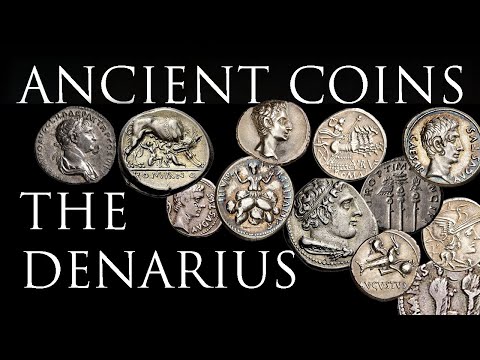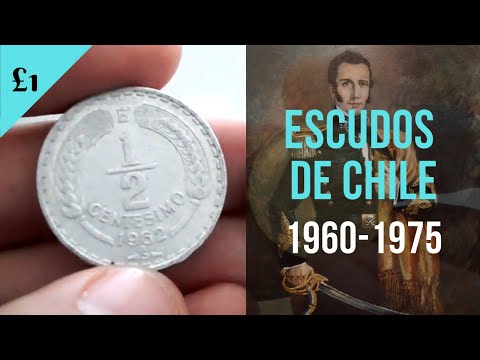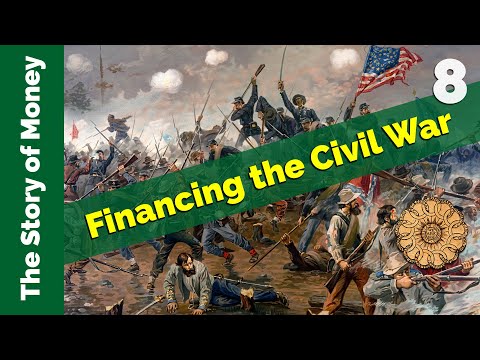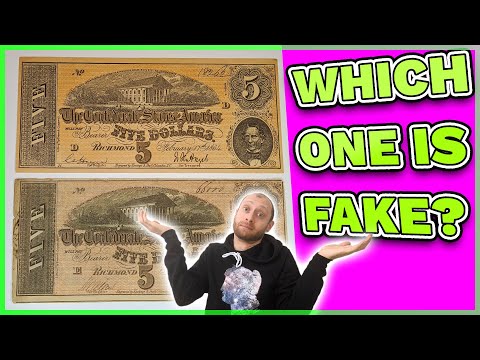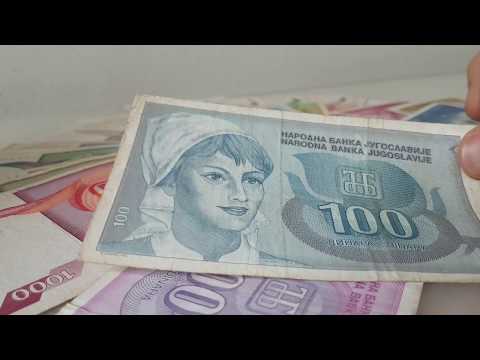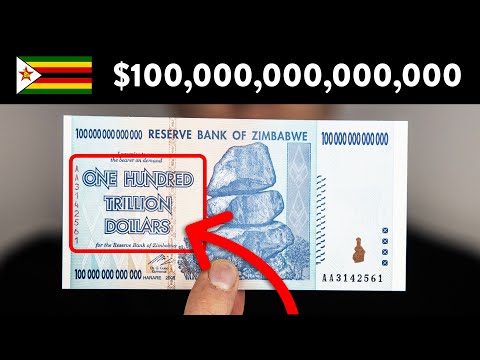Unfortunately, too many governments treat money like coffee—assuming they can always just make more. As we’ll see, this process of chasing increasingly bad money with even worse money can eventually lead to no money at all. Here are ten times legal tender became legally dead.
10 The Roman Denarius
An act of patriotic defiance during Rome’s battle against Hannibal in the Second Punic War, the denarius was introduced in the late third century BC. The coin consisted of almost pure silver and weighed 4.2 grams. Its heyday came in the century following Rome’s mid-second century BC conquest of Macedonia, whose rich silver deposits allowed the money supply to increase tenfold. The denarius became so universal that, by the middle of the first century BC, the inscription “Roma” was removed for lack of necessity. Roman minters produced millions of denarii each year, which flowed freely—not only within the Empire but anywhere Romans traded. Unlike later currencies, the denarius wasn’t BACKED by precious metals; it WAS one. Each denarius had a certain amount of silver, meaning citizens could see and feel its inherent worth. However, as expenses grew—especially military costs—successive Roman leaders incrementally decreased the denarius’s silver content. As Rome’s reach waned in the third century AD, swaths of territory were lost along with their tax revenues. Holding outposts became more manpower-heavy while the coffers got lighter. As the denarius’s silver content dipped to just 5%, citizens began hoarding older coins for their higher silver content—a sign that trust in the currency was eroding. Eventually, the Roman government lost faith in its own currency, insisting that taxes be paid either in gold or in kind. Citizens began unloading denarii in droves, driving up prices and hastening the currency’s demise.[1]
9 The Chilean Escudo
The escudo was a short-lived currency sandwiched between two different pesos. It was introduced in 1960, partially to make up for the country’s lagging currency credibility. At its inception, one escudo equaled 1,000 pesos. Things were going well enough until socialism came to town. After failing on three previous attempts, avowed Marxist Salvador Allende was elected Chile’s president in 1970. The Socialist Party leader quickly went about nationalizing industries and dramatically increasing social spending to redistribute wealth to the poor. At first, the expansive monetary policy Allende adopted produced reasonable economic growth, but as is typically the case, it also fueled inflation. Rising prices were exacerbated by widespread labor strikes, which caused severe production drops and falling exports. In addition, price-fixing policies incorporated to combat inflation led to a sharp uptick in black market trading, dramatically reducing tax revenues. Inflation reached 600% in late 1972 and, a year later, doubled again to 1200%. Unable to meet its financial obligations, Chile defaulted on debts owed to other countries and international banks. The Allende government was overthrown, and he committed suicide—the ol’ South American shuffle. The escudo ended where it began: In 1985, it was replaced by the New Peso at a rate of—you guessed it—1,000 to 1. In short order, Chile became a democratic, economically liberal nation whose turnaround was so stark economist Milton Friedman dubbed it the Miracle of Chile.[2]
8 The Peruvian Inti
The same year Chile birthed the New Peso and began emerging from economic oblivion, its neighbor to the north was financially cratering and debuting an even shorter-lived currency. Once an inviting target for foreign investment, in the 1980s, Peru launched a program of increased public spending…without a plan for dealing with the resulting debt (United States, we’re looking at you). Counterintuitively, it was Peru’s societal and economic liberalization that sunk both its finances and two consecutive currencies, including the Inti’s scant six-year cameo. The background: In 1980, Peru boasted its first democratically elected government in 12 years. The administration of President Fernando Belaúnde substantially liberalized the nation’s trade policies. While policies that lift restrictions on the flow of goods and services usually sharpen competition and encourage innovation, they can also spook foreign investors who value stability over a shifting landscape. Investment dried up, and as inflation soared, Peru’s currency—the sol—was rebranded as the inti at an exchange rate of 1,000 to 1. But for Peru, it was different currency, same problems. By late 1990, inflation had reached 400% per month, and a 10,000,000 inti banknote was created to meet hyperinflated prices. It didn’t work. Pardon my Spanish pun, but the sun rose again: In 1991, the inti was replaced by the nuevo sol, at a conversion rate of a staggering one million to one.[3]
7 The U.S. Greenback
Wars cost money. So as the Civil War ramped up, the U.S. government issued a special emergency currency. Called greenbacks for a signature green print still familiar in modern American bills, the notes deviated from traditional currency insomuch as they were not backed by previous metal reserves. Watch this video on YouTube The greenback has roots in the Panic of 1857, America’s first nationwide financial crisis. The fallout caused the administration of President James Buchanan to incur substantial debt. When the Southern states seceded four years later, the loss of federal tax revenue exacerbated the problem. Initially, greenbacks called Demand Notes were backed by gold. However, as the war dragged on and expenses mounted, the U.S. issued $450 million in unbacked U.S. Bank Notes. The fiscal flood led to the currency’s steady decline against gold. Greenbacks were a blessing and a curse: While they funded 15% of the war’s costs, their questionable value increased the cost of everyday goods. As a result, inflation was 14% in 1862 and 25% in 1863 and 1864. Still, the greenback rebounded after the war. Ironically, the greenback’s eventual discontinuation is tied to its founding principle: Money needn’t be backed by precious metals. The last remnants of America’s gold standard were dismantled in the early 1970s because the economy was deemed strong enough to abandon it. Federal Reserve notes became the uniform standard, and a half-century later, America is a slightly unmanageable $30 TRILLION in debt—about $90,000 per citizen. Gold stocks, here I come.[4]
6 The Confederate Dollar
The greenback’s Civil War counterpoint was the greyback, the nickname for the Confederate States of America’s dollar. The nation’s first and only president, Jefferson Davis, graced the $50 note. Vice president Alexander Stephens appeared on the $20, while rebel firebrand John C. Calhoun adorned the $100 alongside a depiction of black slaves. How chivalrous. Like the greenback, the Confederate dollar was speculative, albeit with longer odds. A Confederate note merely represented a promise to pay the bearer after the war…should the South win independence. The result was a volatile currency that rose and fell along with the day’s news. For example, when word spread of the South’s defeat at Gettysburg in July 1863, the greyback dropped 20%, prompting the government to urge businesses to sell goods at lower prices to compensate for the depreciation. In October 1863, Confederate Senator Louis Wigfall of Texas complained that a soldier’s monthly pay of $11 was, by that time, worth the same as one Confederate dollar at the war’s inception. Eventually, even that diminished purchasing power was extinguished, as many merchants stopped accepting the Confederate dollar at all, foreseeing the fledgling nation’s defeat. As the Confederacy’s hopes dwindled further, its currency spiraled accordingly. By the end of 1864, the Confederate dollar’s worth had decreased so markedly that a turkey sold for $155, while a ham went for $300. In mid-1865, when Richmond fell and Lee surrendered, the currency lost all value.[5]
5 Ex-Soviet Siblings: The Belarusian Ruble & Yugoslavian Dinar
Neither Belarus nor Yugoslavia handled the fall of the Soviet Union particularly well. Both Mother Russia orphans had their share of separation anxiety turned financial panic. In Belarus, the government went from authoritarian to…well, authoritarian. In fact, its first president is its current president. Elected in 1994, Alexander Lukashenko is currently Europe’s longest-serving “president,” which in Eastern Europe increasingly means “dictator.” In the decade following independence from the USSR, Lukashenko oversaw a killer combination of feverish currency printing, price controls, and productivity stifling industry nationalization. The Belarusian Ruble soon added three zeros to all bills—an accounting trick against runaway inflation. It recently hit an all-time low against the U.S. dollar, owed in part to its growing diplomatic isolation. Meanwhile, from 1992 to 1995, the countries comprising the Social Federalist Republic of Yugoslavia ruined, introduced, and re-ruined various iterations of the fractured territory’s dinar. At the height of its hyperinflation, the rate of price increases was more than 100% PER DAY, and in just two years jumped by more than a QUADRILLION percent—that’s a 1 with 15 zeros after it. Eventually each fledgling nation went its own fiscal way. For example, Serbia introduced its own dinar in 1997, while Montenegro used the German Deutsche Mark starting in 1995 before switching to the Euro in 2002.[6]
4 The Weimar Papiermark
It’s one thing for a breakaway republic like the Confederacy to bet the house on a war’s outcome. It’s quite another for an established nation to do so. Watch this video on YouTube To finance World War I, Germany abandoned its gold standard and funded the protracted conflict by borrowing. After a four-year stalemate that left millions dead while accomplishing very little, the Weimar Republic amassed a war debt in the hundreds of billions. Its infrastructure and economy were decimated…AND it owed reparations to similarly ravaged nations, especially France, to the tune of 132 billion marks—about U.S. $269 billion in today’s money. The reparations’ terms were crushing. Germany’s first installment of 50 billion marks came due in mid-1921, but there was a catch: the money had to be backed by hard assets and could therefore not be paid in the rapidly depreciating mark. The haste to purchase foreign currency only worsened the mark’s devaluation. The following year, Germany’s cost of living increased 17-fold in six months. Then, caught in a deadly cycle of printing increasingly worthless money to buy foreign assets to fund its war debt, Germany defaulted on a payment and promptly had its chief manufacturing region, the Ruhr Valley, occupied by France and Belgium. All this is a great way to spark a populist uprising and another World War, which it eventually did. As for Germany’s WWI debt, that was eventually settled…after NINETY-TWO YEARS. The final payment of 70 million euros was made in 2010.[7]
3 Dogecoin
OK, Dogecoin isn’t totally dead. But it’s on life support, and the vet is in the other room with a forever needle. In 2013, the cryptocurrency Dogecoin was launched without much fanfare; in fact, it was among the first such cyber-currencies introduced largely in jest. Gracing the coin’s hypothetical face is Doge, a Shiba Inu dog whose cute, quizzical expression had become a popular Internet meme. Dogecoin’s website had a tongue-in-cheek desire to “take over the world.” Soon, the joke was taken seriously, with folks saying “Oh, hi Doggy” faster than Tommy Wiseau. Dogecoin raised $8 in just two weeks and, by May 2021, had an impressive market capital of $85 billion. Two months later, it topped a collection of Memes That Changed History on a cankerous little site called Listverse. Unfortunately, Dogecoin’s investors aren’t laughing so hard anymore. In late June 2021, Forbes highlighted a number of cryptocurrencies experiencing market freefall in an article creatively titled “Downward Facing Dogecoin.” About that time, the bottom began falling out of several other Bitcoin competitors. In early January 2022, Dogecoin dropped to 8 cents, with investment experts warning it might completely collapse. Sometimes when a currency is launched as a joke, the punchline ends up landing on investors.[8]
2 OneCoin
Another famously failed cryptocurrency collapsed…because it never existed. In 2014, self-proclaimed “CryptoQueen” Ruja Ignatova launched OneCoin. Touting the new cryptocurrency as a “Bitcoin Killer,” she grabbed publicity and lured investors by hosting glamorous events around the world, including one in London’s Wembley Arena. Ignatova claimed some 120 billion OneCoins were available through the always-suspect process of crypto mining. From there, they could be used like any other online currency through a dedicated OneCoin e-wallet. Key to OneCoin’s initial fundraising was the sale of educational materials, including courses on cryptocurrencies, trading, and investing. The courses were part of a multi-level marketing effort—legalese for “pyramid scheme”—where buyers were offered rewards for bringing in more participants. Those who purchased these “course packages” were to receive tokens used to mine OneCoins. OneCoin’s currency exchange engine was called xcoinx. However, only members who purchased more than the “beginner packaging” could access it. Soon, selling limits were placed on accounts based on the level of education package purchased. Finally, national governments began noticing the waving red flags; in 2016, both Norway and Hungary dubbed OneCoin a scam. By the time OneCoin was shut down in 2017, millions of investors had been defrauded in what amounted to a $4 billion Ponzi scheme. As for Ignatova, she’s become a cyber Carmen Sandiego of sorts. On the lam since 2017, she’s never been apprehended despite being internationally wanted.[9]
1 The Zimbabwe Dollar
This list’s award for most inflated currency goes to…Zimbabwe. Left destitute by ceaseless racial conflict and an economically clueless government, Zimbabwe began overworking the currency printing presses in the 1990s. The banknote bonanza continued into the early 2000s, and in 2006, the East Africa nation made international headlines by reaching a foreboding milestone: its inflation rate had reached 1,000%. Unfortunately, that was just the beginning. In a practice that’s been repeatedly attempted (and has repeatedly failed) throughout history, Zimbabwe issued ever-larger bills to compensate for skyrocketing prices. In mid-2008, the first notes with a value greater than one billion Zimbabwe dollars made their debut. Just a few months later, the inflation rate was approaching—and this is an actual number—500 QUINTILLION PERCENT. To understand the enormity of that figure, here’s what it looks like: 500,000,000,000,000,000,000. Soon, the country passed a law removing ten zeros from all notes and prices. Crisis abated? Not at all. The next year, Zimbabwe stopped printing its currency and temporarily allowed foreign currencies in their place. It switched completely to the U.S. dollar briefly in the mid-2010s before, in 2019, introducing a new iteration of the Zimbabwean dollar. How’s that going, you ask? In July 2020, inflation was approaching 750%, and this past October, the country’s most prominent business group warned of the Zimbabwe dollar’s possible collapse.[10] Read More: Twitter Website
